To me, there is nothing more inspiring than seeing people achieve their goals and make their dreams a reality. For filmmakers, their dream is for people to see and appreciate the work of art that they have created. This Sunday, October 30, local filmmakers will have their short films shown at the New Art Film Festival. The New Art Film Festival, or NAFF, is a yearly festival where Illinois filmmakers are given the opportunity to submit their films and possibly be granted a spot in the festival where their work will be shown.
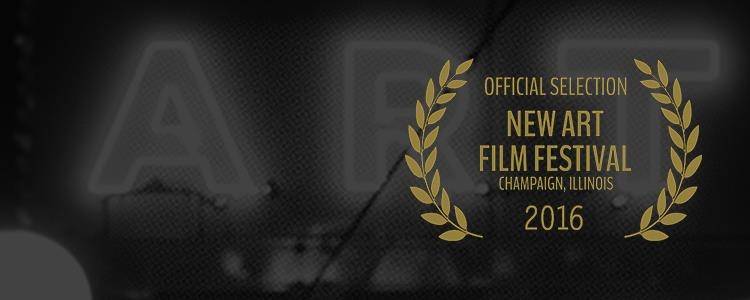
In order to really understand how wonderful it is to have a festival like this, I decided to talk with not only someone who organizes the festival, but also with a few people who will be participating in the festival and showing their work. I set out to talk with program director Jason Pankoke. What follows is the conversation we had regarding the festival and what he hopes the festival will achieve.
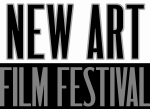 Smile Politely: Can you talk a little about the kind of work that goes into preparing and putting on a film festival?
Smile Politely: Can you talk a little about the kind of work that goes into preparing and putting on a film festival?
Jason Pankoke: Champaign-Urbana film festivals are an unusual lot since none of them really follow the template for big-city or industry-friendly festivals. The New Art Film Festival is no different in this regard, although it is still quite distinct from other local events like Ebertfest or Pens to Lens. In this instance, apart from key help by individuals like Lisa Cerezo at ThirdSide, who manages the NAFF Web site and creates graphic design collateral for us, and Luke Boyce at Shatterglass Studios, who manages the high-resolution screening files and prepares the versions for projection at the Art Theater Co-op, the organization of the NAFF falls squarely on my shoulders.
My main role, to be honest, is to demonstrate consistency and integrity in moving through the various steps each year and ensuring that “the show goes on.” It involves a steady mix of communicating with filmmakers, volunteers, the press, and/or the community-at-large to make sure the word on the NAFF gets out there, people get excited for the upcoming show, movie producers and volunteers deliver the materials we need to put on the NAFF, and arranging the puzzle pieces that will come together for a festive, if modest, presentation at the Art Theater.
SP: How do you choose what films to show at the festival? Are you looking for a wide variety of films or films that have some thematic similarities?
Pankoke: I like to allow the sum total of what is submitted to the NAFF each year to guide me in deciding what movies to show and in what order they should play. Since the Art Theater gives us a specific block of time each year, we must keep total run time in check. Within that constraint, we look to program a variety in content and filmmaking style to effectively show an audience the versatility of “independent film.” We are always interested in playing shorts created by filmmakers who live outside our immediate area, so that our filmmakers and audience can see something new and possibly meet someone new as well; the vice versa applies as well, should those folks visit Champaign to attend the NAFF. This year, we have included films from filmmakers based in Charleston, Chicago, Danville, Decatur, and Springfield.
If there is a possibility of a block of films adhering to a theme that becomes apparent during the screening process, we might accommodate that when ordering the films. Examples might include a block of shorts with science-fiction elements or a block of shorts that tell grounded, realistic stories whether fiction or nonfiction.
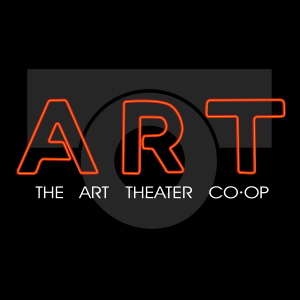 SP: What kind of experience do you hope people will get from coming to the festival? What do you hope people will feel after experiencing the films that have been chosen for this festival?
SP: What kind of experience do you hope people will get from coming to the festival? What do you hope people will feel after experiencing the films that have been chosen for this festival?
Pankoke: More than other local festivals, the NAFF is very stripped down in its feel and presentation, I’ll admit. All the basic elements you would want to have with a film festival experience – quality films, focused programming, clear projection, full stereo sound, courteous audience, welcoming environment, refreshments and amenities – are present. The NAFF has always been very low-budget, so attendees will not be bludgeoned with excess bells and whistles. Eight years on, we actually prefer it that way to keep everyone’s attention on the films, our community, and the opportunity to network with creators during or after the show.
We hope the audience for the 2016 NAFF is impressed by the overall quality of these films, of course, but also understand better that films like these – or rather, films like ours – can explore stories, thoughts, emotions, and histories not necessarily in line with the status quo. Several films in the program this year, such as our feature “Before ‘I Do’ and the half-block of shorts immediately following it, explore through their characters such things as hurt, loss, violence, racism, personal escape, bittersweet hope, and internal strength. The overall effect may seem a bit somber or some attendees or hit a little too close to home, but I think it more honestly reflects current moods and concerns in our society than one might imagine. Certainly, plenty of “light” and “fun” material appears in the program as well!
We always cross our fingers that some individuals who have considered getting into the performing arts or storytelling media will be inspired enough by these films to take their own steps forward. That could include exploring the filmmaking process through local groups like Pens to Lens or Champaign Movie Makers, volunteering on upcoming film productions just to get a taste and try certain roles on the set, or striking out on their own to investigate, practice, and learn the craft of producing motion pictures. Tons of resources and tutorials can be located on-line for the novice, while nothing replaces the value of hands-on experience!
SP: I have been to a couple of film festivals myself and after each one, I feel like I have experienced a wide spectrum of film in that I have seen many films that are in many different genres. Can people expect something like that with this festival? Do you want people to experience all kinds of different films or are the films selected more or less exist in the same genre?
Pankoke: Maybe the best way to approach the NAFF is to less expect a “wide spectrum” that only larger or international film festivals could possibly provide, such as the Chicago International Film Festival that concludes on October 27, than as a way to explore what “the spectrum of local independent filmmaking is at this point in time and could be in our collective future.” We should acknowledge the virtues of each film in the NAFF, but also “imagine forward” as to the kinds of films, stories, histories, or film-related experiences we might not yet be seeing in the line-up of the NAFF or other local shows. Who will step up? What will be produced that is unlike anything produced before in downstate Illinois? We won’t know until we get there. The next intrigues us as much as the now, or even the recent past as documented by default on the NAFF Web site. Our genre, for lack of a better definition, is “the Champaign-Urbana, Illinois, genre.” Or, as we occasionally call it, the “CUCU” or “Champaign-Urbana Cinematic Universe.” Quote us or simply blame us for that one!
—-
After an enlightening chat with Pankoke, I wanted to hear some of the filmmakers talk about their work and being in the festival. I had the privilege of speaking with three different filmmakers and was able to ask them a few questions. What follows are my discussions with those filmmakers.
SP: What kind of themes does your film explore? Does it have a specific kind of tone?
Shea Kelly, Director of Demon In, Demons Out: The tone of the film was always very clear — dark. I always stray toward dark, powerful subjects and plots, but every film I’ve done also has its base in humor. I think everything can be played for a laugh if done the right way. The main theme of the film on the surface is pride, what pride can do to mankind when it’s the primary focus. Our two main characters are both so immensely saturated with their own hubris that it stops them from being able to see their own bigger picture.
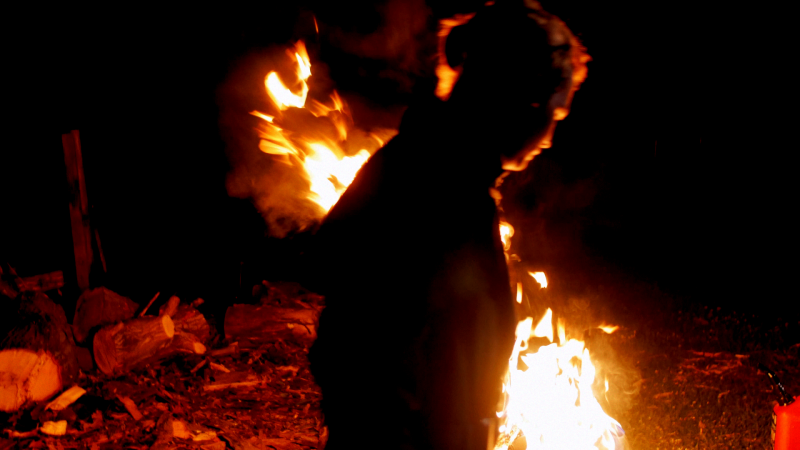
Kris Wilcox, Director of Rise: The theme this film primarily explores is the aftermath of a sexually abusive relationship and how, even years later, it has a haunting effect. The tone is dark and hopeful (see question 2 for a deeper explanation about that). I chose the forest as a metaphor for the brain and being trapped in the trauma of the abuse.
Kimberly Conner, Director of Before ‘I Do’: Before ‘I Do’ explores relationships and fidelity, friendship and love. The film’s score helps to set the tone, solidifying the film, as its icing on the cake, very warm and inviting.
SP: What was the most challenging aspect of making this film and getting it to be in a film festival?
Kelly: Putting all the pieces together to complete the whole takes quite a bit of effort. I lead an unorganized life, but if you take that into filmmaking then you will not make a very good film, in my opinion. At the time of the shooting, none of our main cast and crew lived within 45 minutes of each other. Having to schedule everyone to be in the same place at the same time proved difficult. Greg Trumbold, one of the stars of the film, was originally slated to be the main character, but we couldn’t make it work. This is my first festival, but it would have been my 50th rejection. Sometimes you make a film, put all your heart and soul into it – then only your mother and a few friends watch it. That can be discouraging to anyone in any media field, and it’s hard to pick yourself up from that. Soon you realize you have to, because you can’t live without it.
Wilcox: The hardest part of making this film was honoring survivors of sexual assault without making it too graphic or too dark while trying to contain strong and supportive rhetoric. I really wanted to invoke a feeling of hope at the end of the film. I wanted to use my experiences as a vessel to raise greater awareness about the subject matter, but still leave it a bit dark because it’s hard to move on from such a traumatic event. Another challenging aspect of this film was finding a cinematographer that I knew could bring the story to life. Will Young, a very close friend, was immediately supportive and felt as strongly as I did that this subject matter needed to be brought forward. The communication between us was crystal clear and I couldn’t have picked a better cinematographer to direct. As far as turning it into a film festival, it was obviously hard because this was originally a digital non-fiction piece I polished into a film that I would eventually be ready to show the public. When this festival came to my attention, it was the perfect moment to do so. Even though it was personal, I feel like it’s my duty as a woman and a feminist to stand up for the women, and men, who have gone through this.
Conner: The most challenging aspect of making this film in particular was finding the right Editor, quite honestly. The third time proved to be a charm. But it was a challenge initially.
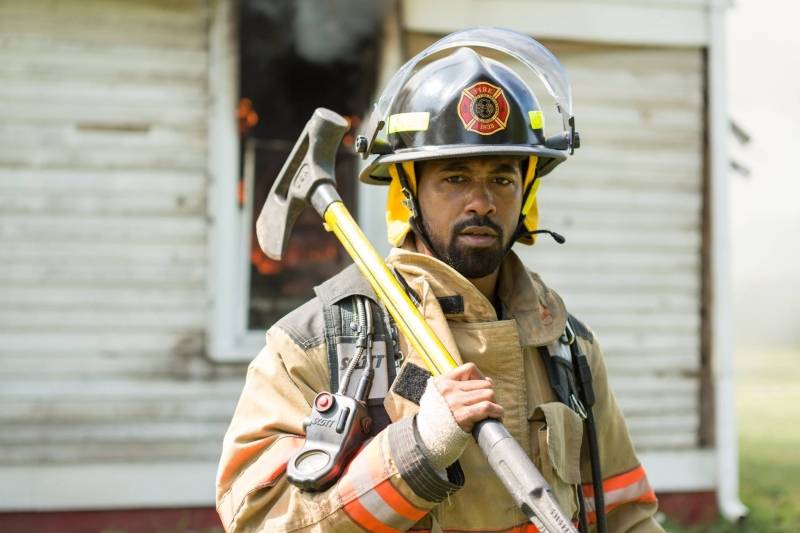
SP: What do you hope the audience gets from watching your film/short? What kind of experience do you want them to have? Do you want them to think about specific ideas or questions after viewing the film?
Kelly: I want people to laugh! My major fear with making this film was that no one would see the humor below the layers of horror and blood. Hopefully people are surprised by what can be done by a few tenacious people when backed into a creative corner.
Wilcox: I’m hoping the audience feels uncomfortable but then, in turn, feels a call to action to support individuals who go through sexual abuse, assault, and rape. While this is RISE’s public debut I’ve also had close friends and colleagues watch the film to review it. Some left upset and didn’t like the graphic subject matter at first, which I understood, but after digesting it for a period of time they accepted the story I was telling them and realized what I was trying to get across. And if people leave uncomfortable and upset at this festival I can accept that. I’d love to reach everyone and call them to action, have them question the society and present rape culture we live in but even if only one person does so, my film will have been a success.
Conner: Yes, absolutely. I hope that the audience sees it as a story enriched with passion and purpose. It is my hope that the audience laughs, and gasps, at the myriad of surprises. I hope that by seeing this film, people will be inspired to pursue their purpose. That is the message that I’d want the audience to walk away with, discovering what that is.
———
If you want to see these filmmaker’s works, make sure you attend the festival this Sunday at the Art Theater. For a full list of the films and their times, you can check out the official NAFF website.
Jordan Kreie is a recent college graduate with a Bachelor’s degree in English. When he is not writing articles for the Arts section of Smile Politley, he is watching movies and writing film criticism. You can find him on twitter @jordankreie or read more of his work on his blog.
All images were provided by Jason Panokoke on behalf of the filmmakers: Kimberly O’Conner (Before ‘I Do’) and Shea Kelly (Demons In, Demons Out). Banner image by ThirdSide.








